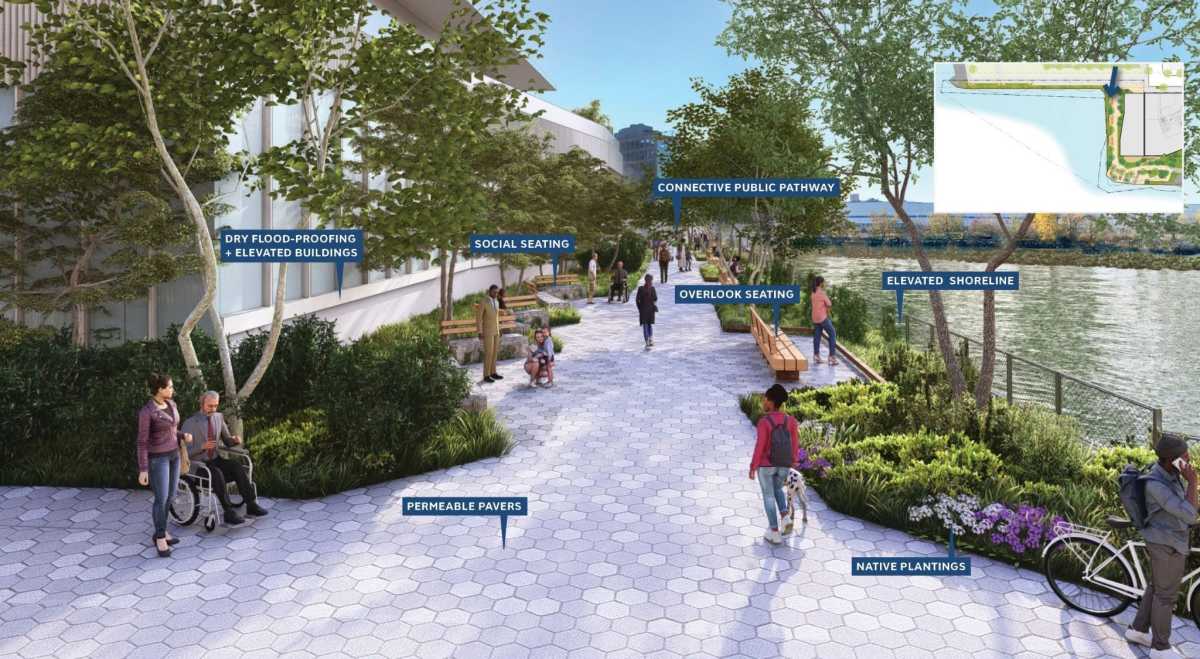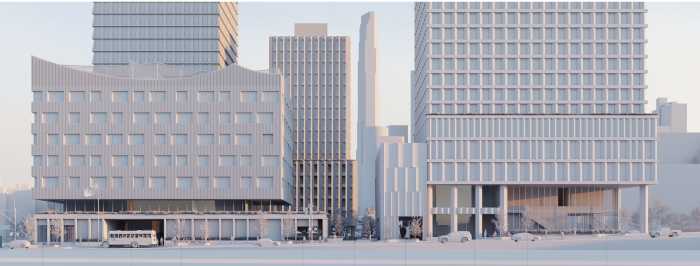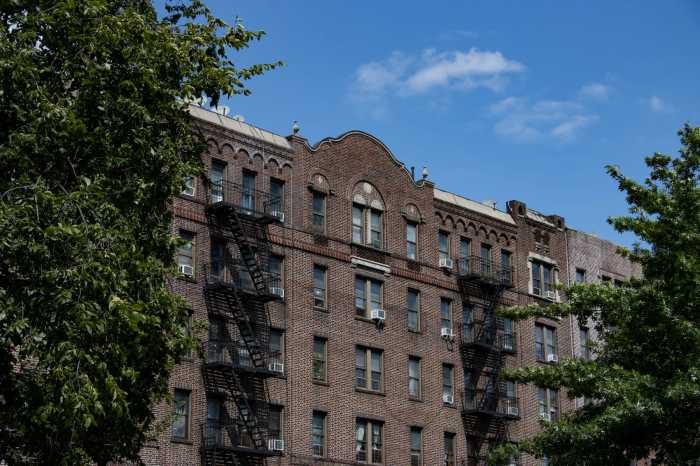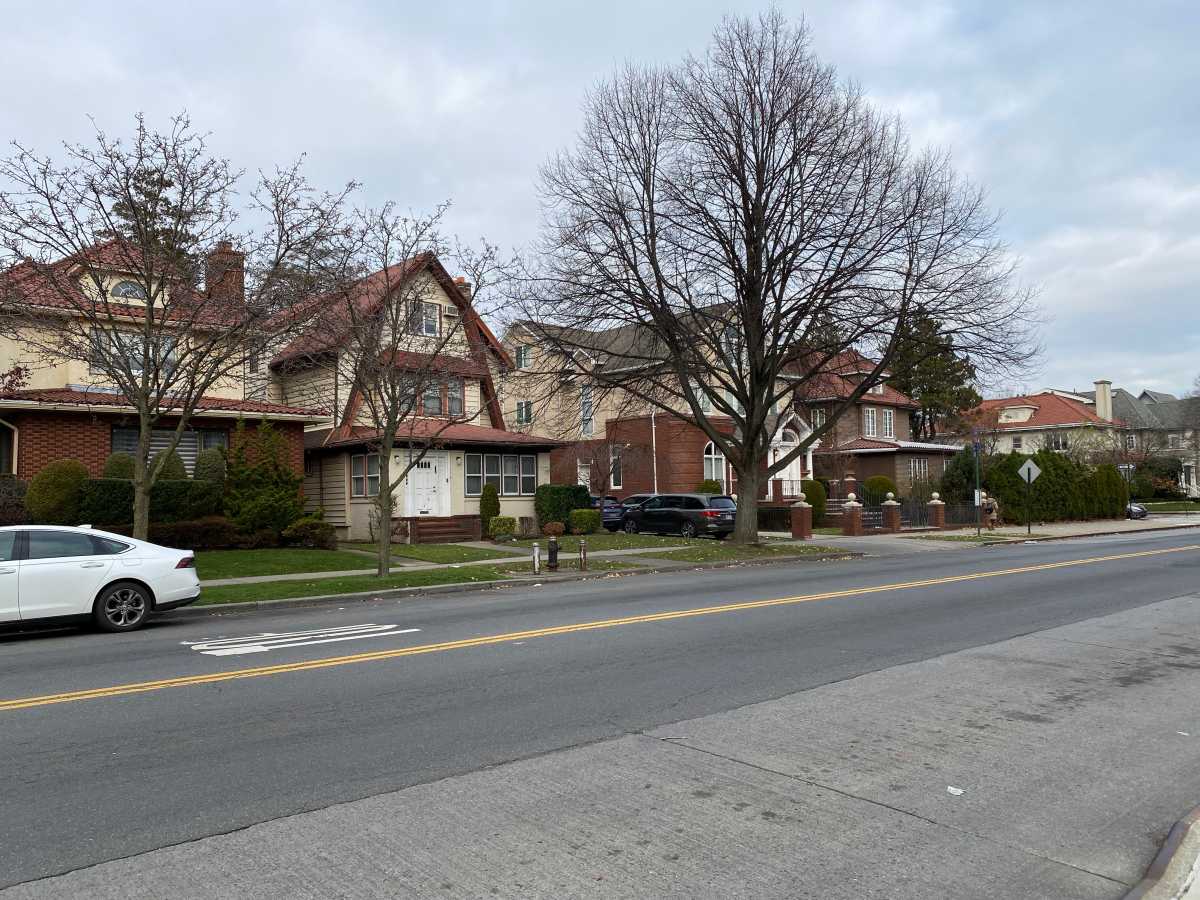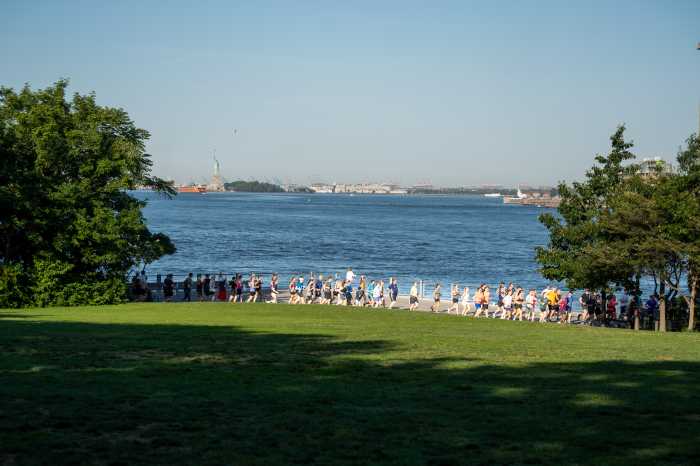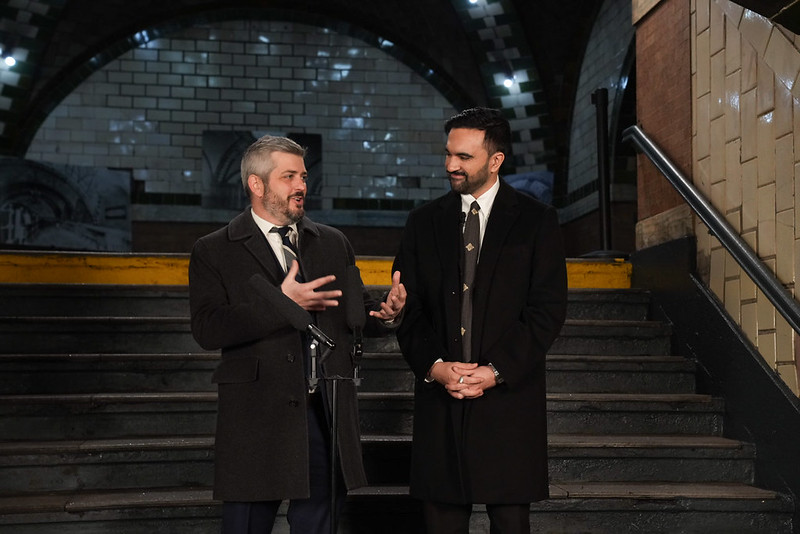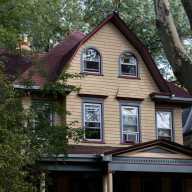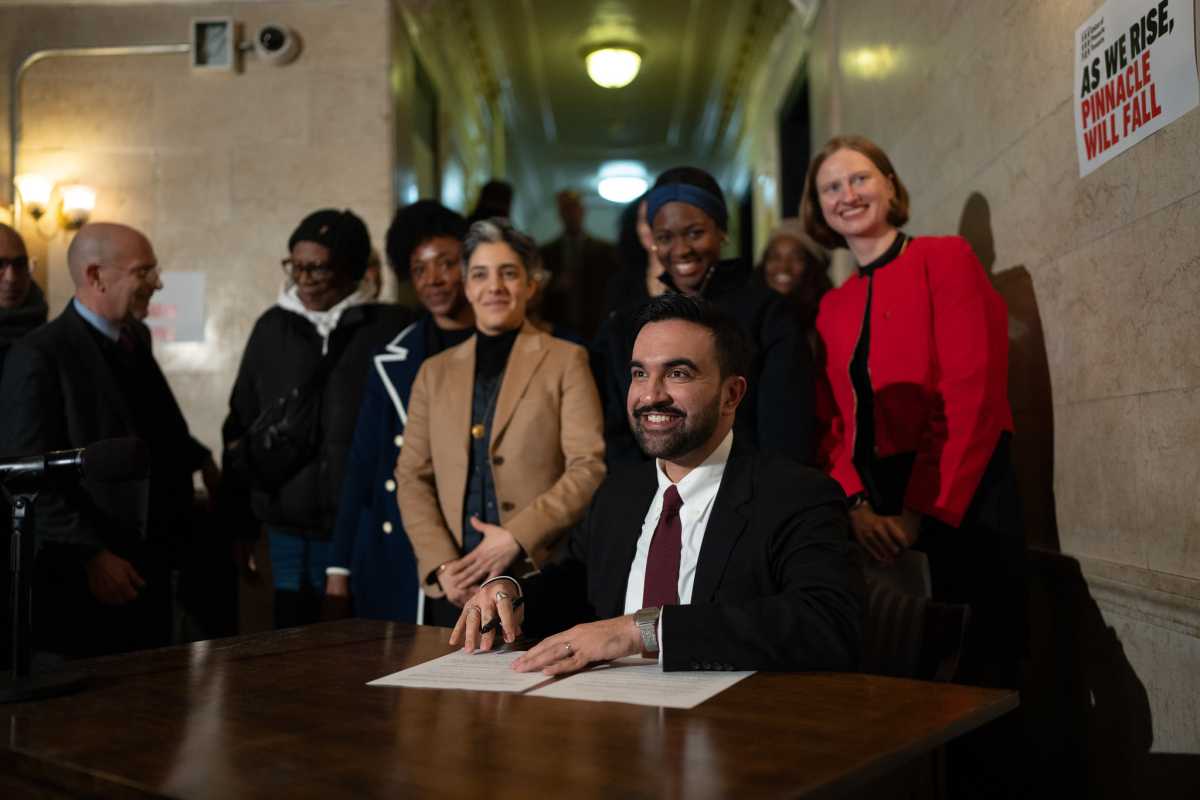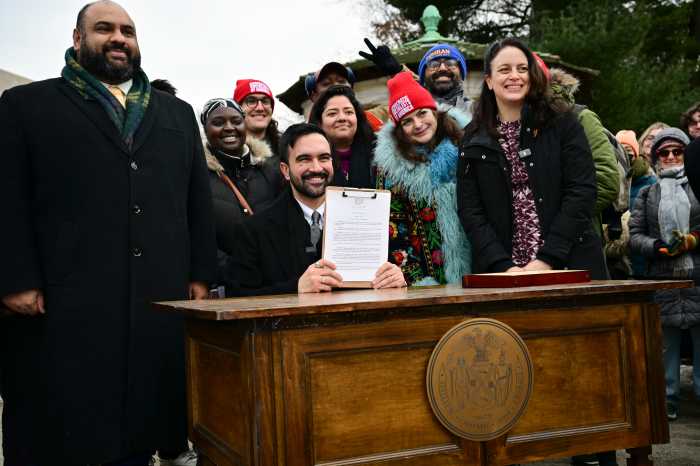A proposed development just north of Bushwick Inlet Park is stirring controversy among locals before the official rezoning process has even begun.
Developers are hoping to build a mixed-use high-rise building at 40 Quay St., an MTA-owned lot that currently houses a truck wash station, as well as a smaller building at the adjacent 56 Quay St.
Dubbed Monitor Point, the development would include 1,150 apartments, retail, a physical space for the Greenpoint Monitor Museum, and publicly-accessible outdoor space. The “west building,” closest to the inlet, would comprise two glass towers rising 600 and 450 feet tall, respectively; the “east building” at 56 Quay would stand 230 feet tall.
The project, which is expected to begin the city’s Uniform Land Use Review Process this fall, came out of the MTA’s efforts to generate revenue for its capital program by leasing the waterfront property for 99 years. As part of the deal, the Gotham Organization — the developer chosen by the MTA in 2021 — will also relocate the existing wash facility and a separate MTA emergency response facility to an industrial lot in Williamsburg.

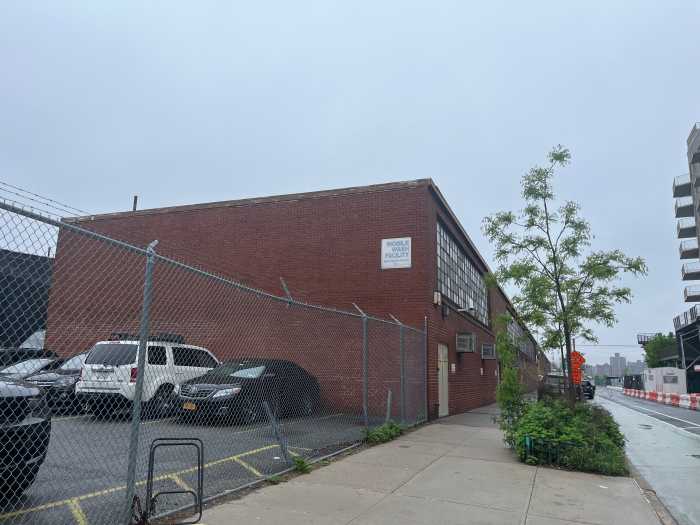
Local opinion on the project is strong and split. Dozens of people testified at a virtual City Planning Commission scoping hearing in April, and a Community Board 1 meeting where Gotham presented in June reached capacity so quickly that people had to be turned away and submit their feedback virtually.
Supporters say the community desperately needs more housing, especially affordable housing – Monitor Point would include about 288 affordable units — and both temporary and permanent union jobs. Developers say the project would also help gird the vulnerable waterfront community against climate change and flooding.
But opponents fear Monitor Point would have the opposite effect, endangering the still-incomplete Bushwick Inlet Park and the ecosystems surrounding it while driving up housing prices in a fast-developing neighborhood where rents have already risen significantly.
Development raises environmental concerns
The MTA-owned lot at 40 Quay St. is currently zoned to allow buildings of up to 14 stories, including residential ones. The height limit was intentional, said Katherine Conkling Thompson, president of Friends of Bushwick Inlet Park.
“They understood that it is only 50 feet from the water’s edge, adjacent to Bushwick Inlet Park, and they wanted to make sure the structures wouldn’t impose upon the public park, wouldn’t impose upon the ecology, and would make a graceful transition from the historic Greenpoint neighborhood and the historic waterfront to the Bushwick inlet,” she said.
The city promised to build the 1.5-mile Buswick Inlet Park as part of the 2005 Greenpoint-Williamsburg rezoning, which upzoned the neighborhood significantly and paved the way for dozens of new buildings and tens of thousands of new residents.

Since 2010, more than 26,000 new units have been built in CB1, and the neighborhood has become one of the most desirable in the city. But, 20 years after the rezoning was approved, the park still isn’t done, thanks to a series of setbacks and delays as the city struggled to buy up and develop all the parkland. As of July 2025, two nonadjacent parts of the park are finished and another is nearing completion, but two large parcels are still undeveloped and under-funded.
The City Planning Commission’s Environmental Assessment & Review Division determined that Monitor Point could have significant environmental impacts on the surrounding area, documents show, and may cast new shadows on “sunlight sensitive” areas like Bushwick Inlet Park and the East River, and could have a “significant adverse impact to natural resources” including the inlet and the river. A full Draft Environmental Impact Statement is underway.
Conkling Thompson worried the buildings could harm migratory birds who take advantage of the park during their long flights — window strikes kill up to 230,000 migratory birds in New York City each year — though Gotham has said Monitor Point will use all bird-safe glass. The Bushwick inlet itself is a delicate ecosystem, she said, where fish, eels, and other sea creatures breed and feed.
But supporters and developers say Monitor Point would help protect the area against climate change. Bryan Kelly, President of Development at Gotham, said the property now owned by the Greenpoint Monitor Museum is particularly vulnerable to flooding and erosion.
“It’s in significant distress, it’s deteriorating, and would require north of a $15 million investment to stabilize the shoreline,” he said. “Essentially eliminate the decay, build it up, make it flood resistant — all items that will benefit … resiliency, not only for our development, but also to protect the inlet and the improvements being made as we speak by the parks department.”
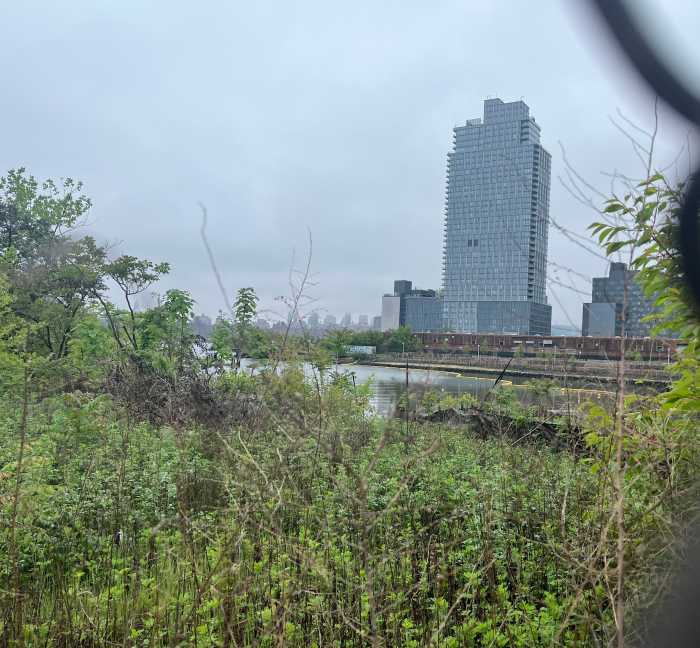
Monitor Point would include two publicly-available green spaces, he said, one that would connect to West Street and one along the water.
Daniel Hernandez, a senior associate at landscape firm SCAPE, which would help design Monitor Point, said the spaces would make use of native plantings and permeable pavers to mitigate storm water, and would include a waterfront grove and open-air classroom. Additionally, Kelly said, Gotham would make a $300,000 contribution to Bushwick Inlet Park each year.
Gotham would also foot the bill to construct a new MTA facility in Williamsburg, Kelly said, which would eventually house both the Quay Street facility and the separate ERU facility, which currently sits on Box Street. That would facilitate the construction of the long-promised Box Street Park, Kelly said, which is currently blocked by the MTA’s use of the lot.
Affordability and access
Steve Chesler, vice president of Friends of Bushwick Inlet Park, worried that the scale of Monitor Point would make the park feel like “part of the private property’s front yard,” making it most accessible to residents who are largely paying market-rate waterfront rents.
CB1 offers only .6 acres of park space for every 1,000 residents, well below the city’s goal of 2.5 acres per 1,000.
“Parks are the great equalizer, no matter what your background is, ethnic, socioeconomic, wherever you work, you just come here and this is your park,” he said.
Monitor Point would bring about 1,105 new units, about 288 of which — or 25% — would be made affordable under Mandatory Inclusionary Housing requirements. Those units would be offered at around 60% of the Area Median Income, according to documents filed with the city, or $87,480 per year for a family of three.
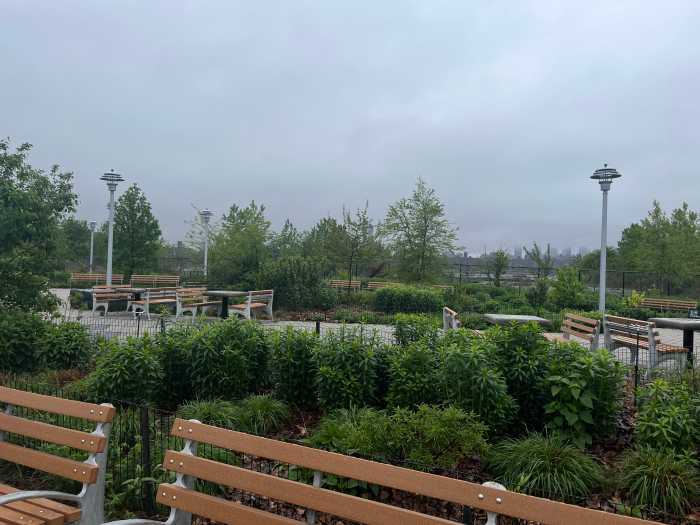
At 60% affordability, a two-bedroom unit would run about $2,187 per month. Average market-rate rent in Greenpoint is about $3,659, according to RentHop, and the going rate for a two-bedroom in the nabe was $5,704 as of June 2025.
“300 lower-income homes on the waterfront of Brooklyn without any public subsidy capital is an astounding number,” said Bryan Kelly, Gotham’s President of Development. “And what we heard from the community board, and we’re happy to hear and work with them on, is creating or making a commitment to certain family-sized homes for those lower-income homes.”
Giving families an affordable opportunity to live in a desirable waterfront neighborhood with good amenities, Kelly said, is a “public equity discussion.”
At the CPC meeting in April, local Ariel Dixon — who is also a member of Local 79, a union which would likely be part of the Monitor Point construction, if the project is approved — said the housing is much-needed.
“It will give people like me more opportunities to work with good wages, build up our community, and it means more Brooklyn families can actually afford to stay here,” she said. “People who already own or live on the waterfront shouldn’t be the only ones who get to enjoy it.”
But not everyone is convinced, and some locals have said their hesitance is influenced by the outcome of the 2005 rezoning.
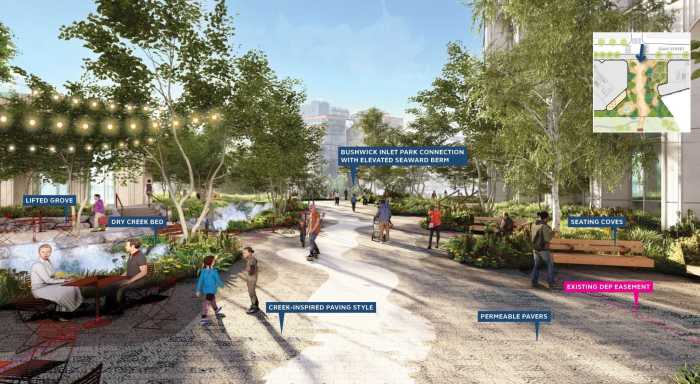
“The community had to take luxury high-rise buildings in exchange for open park space, this being a community that was starved for open space,” said local Chris Dunn at the CPC meeting. “We have the high-rise towers, we don’t have a park. Most of that park space is years if not decades away from utilization.”
Conkling Thompson said she isn’t opposed to building new housing, or even luxury housing on private property, and would support Gotham if it wanted to build all-affordable at 40 Quay St.
“But we feel that because of this being a publicly-owned property, to give it over to private developers who would stand to make hundreds of millions of dollars, versus the MTA making $38 million … why would we be giving public land to private developers?”
A Monitor Point spokesperson rebuffed the claim that the project would only make $38 million for the MTA, saying Gotham would provide a $70 million MTA facility “with no cost to taxpayers” as well as $700 million in lease payments to the MTA over the course of the lease.
“Asking developers to create affordability hasn’t worked in our neighborhood,” Conkling Thompson said. “People might try to say that we’re NIMBY, and that’s kind of true. We don’t want luxury housing on the edge of our public park, which is our backyard.”
Next steps for Monitor Point
The Monitor Point ULURP application is expected to be certified before the end of the year, and the official ULURP process could begin as soon as this fall. That would bring more meetings with the community board, the borough president, and the CPC before the proposal was voted on by the City Council.
If the project is approved, Kelly said, Gotham would start constructing the new MTA facility in Williamsburg in 2026, and could start work on Monitor Point in 2028.
Correction 7/16/25 11:53 a.m.: This story has been updated to reflect the correct number of floors allowed on the lot as-of-right, and with additional context regarding the revenue generated for the MTA.


